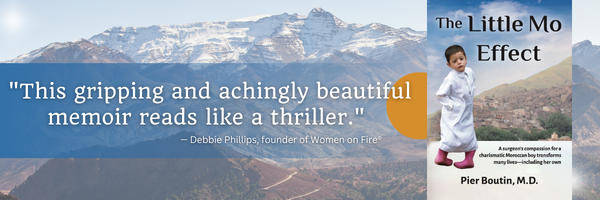For years the FDA and big drug companies have been telling us they’re getting much-needed new drugs to market faster than ever. The FDA has published studies backing up its claims that the new “fast track approval process” is just as safe as the old, slower method. And certainly the new process can take just half the time of the old way.

But is the new system really safer? We reviewed the evidence, and found plenty of reasons to be concerned. You should be too.
Obviously, we all hope that new, lifesaving drugs become available as quickly as possible. But there are business factors at work here, too. It takes a longtime to develop new drugs, and drug development is an expensive process. Drug companies have suffered for years from a relative failure to discover breakthrough new products.
This means that as older drugs lose their patents and go generic, drug companies don’t have new hit products to replace the lost revenues. Thus they have a financial incentive to use the FDA’s new accelerated approval process to to replenish their product line faster.
But you won’t be surprised to learn that faster doesn’t necessarily mean better.
What drug companies don’t know can hurt you
According to a 2017 study, nearly a third of recent new drugs had a safety issue that was identified after the FDA approved the drug for sale. Of the 222 new drugs put on the market between 2001 and 2010, 71 (or 32%) had a safety issue that the testing and approval process didn’t uncover. In 43 of the drugs (or 19%), the side effect was severe enough to warrant a “black box warning,”which is reserved for side effects that are potentially life threatening. In three cases (or 1.4%), the problem was so severe that the drugs were actually pulled off the market. But the drugs had already been on the market for years!
For most of the drugs looked at in the study, the product was on the market an din use for anywhere from 3 to 5 years before a pattern of patient safety concerns was found. When you consider the fact that the median review time for FDA-approved drugs is about 11 months — and half that for fast-tracked drugs — you start to realize why there’s a problem.
Safety review processes have changed
Fast-tracking first became an option in drug development back in the 1990s, when Congress passed a law intended to help relieve the backlog of research into drugs needed to treat life-threatening illnesses and “orphan” diseases. The concern was that people were suffering and dying because promising medications just took too long to get through the arduous, expensive drug safety and efficacy assessment process. The goal with these changes was to get drugs into the hands of patients faster if they showed clear superiority to existing treatments (or if they treated conditions for which there were no existing treatments).
And over the past 20-plus years, there have been some great successes in reaching that goal. Drugs called immune checkpoint inhibitors, for instance — many of which received “priority review” or fast-tracking from the FDA — have doubled the rate of survival in patients with the most serious form of skin cancer, metastatic melanoma. Butas is often the case, just because there are successes in some cases doesn’t mean it’s wise to try the process in all cases — because there have been some serious problems, too.
One example of how the expedited approval process has gone wrong is Eteplirsen, a drug approved in 2016 for Duchenne muscular dystrophy. This drug’s approval process pitted the FDA’s commissioner against its chief scientist, with the commissioner calling for expedited approval (in part to assure that research for further therapies could get funding from the drug’s sales) and the chief scientist protesting that the drug was ineffective and offered “false hope” to patients and families struggling with a difficult chronic illness. The commissioner prevailed, and the drug was approved — but many pharma industry watchers were disturbed by how it was handled. After several years on the market, there doesn’t seem to be much evidence that it works in the patients who take it,which suggests the chief scientist’s argument against approval was well-founded.
In the three years since the Eteplirsen approval sent shock waves through the industry,the FDA’s flawed approval process has changed — but not for the better.The recent push to “deregulate” the FDA is cause for concern, and even some drug company executives have spoken out about it. “In my view it’s nuts to ascribe a material portion of the time and cost of drug development to FDA‘regulations’,” one biotech entrepreneur said in an interview.“Lowering the bar for proof is inviting both catastrophe for patients and even more wasted money in a system that is forced to pay for drugs that don’twork — and may even inflict harm.”
What accelerated drug approvals may mean for women
Unfortunately, quite a few fast-tracked drugs are marketed directly to women. The drug industry pushed the FDA to allow direct-to-consumer advertising back in the 1980’s, and it now spends over $5 billion on such promotions every year in the USA alone. Notably, the US is one of the few countries in the world where such advertising is legal, effectively diminishing the role of the doctor in choosing drugs for her patients. Here are two recent and worrisome examples: first,the drug Xeljanz, which was approved in 2012 for treatment of rheumatoid arthritis — a debilitating autoimmune disease that women experience at over twice the rate men do, and usually at a younger age. In February 2019, almost 7 years after it first went on the market, post-marketing safety studies concluded that a 10-mg twice daily dose of Xeljanz has an increased risk of blood lots, pulmonary embolism, and death.
Then there’s Addyi, the “female Viagra” approved in 2015 for women with unexplained low libido. The FDA approved the sex drug for women despite concerns that combining the drug with drinking alcohol could cause low blood pressure and fainting — concerns that had prevented the drug’s approval twice before, in 2010 and again in 2013.Many healthcare providers, including some of the reviewers who assessed the drug for the FDA in the first place, objected to the approval, arguing that the drug didn’t meet the standard of providing significant benefits to the patient. Some of their related objections are downright disturbing, among them the fact that the drug’s manufacturer placed “inappropriate pressure … upon the drug approval process by the ‘Even the Score’ campaign, which was partly funded by the Applicant.”
So many questions
In the case of Xeljanz, why did it take so long to find the problems? One reason:The drug companies gather as little data as possible before submitting their drug for FDA approval. The drug’s manufacturer, Pfizer, did run a clinical trial assessing drug safety at the 10-mg twice daily dose before the drug’s approval— but the trial ran for just 6 months. Most patients are likely to use ita lot longer than that. There have been more follow-up studies since 2012 —but meanwhile, the drug is already being used in patients and is being advertised regularly on television and in magazines in an effort to acquire more customers.
This means that drug companies are still learning about their products’ long-term effects while you’re taking them.
And as Addyi shows, they’re not at all unwilling to put pressure on regulators to get drugs to market even when there are good reasons to reject them — to the point of creating entire PR campaigns (disguised as patient advocacy), to get even an iffy product over the finish line. How is that good for patients?
Or, as one pharmacology professor put it in the Journal of Pharmacology and Pharmacotherapeutics,““Many drugs that are relatively new to the market find their way out as fast as they entered it. Is expediting drug discovery really solving the unmet needs of society?”
Who’s protecting you?
Step back and consider how these factors work together. Drugs are rushed to market without large-scale, long-term trials. This conceals risks that only emerge months or years after the drug is certified. But meanwhile, the drugs are advertised directly to consumers. Notably, half of all clinical trials in the USA are never published — not even to doctors. And half of all drug prescriptions are off-label, i.e. written for a usage other than what the FDA approved.
So what’s that add up to? Certainly there are cases where the innovative new drug is a true breakthrough that relieves suffering and saves lives. But in many if not all cases, it also means that neither you nor your doctor can really assess the risk/reward ratio of the drug you’re being given.
What can you do? In our view, it boils down to is this:you have to do your homework when it comes to treatments, especially when taking medications that are new to the market (meaning, within the past 10 years).
Watch the ads on TV critically. Usually these ads manipulate people’s thinking by creating impossible expectations and playing off our desperation. Also, listen carefully to the list of side effect sat the end of each ad — if they’re recited too quickly for you to hear,look up the drug’s website or third-party review site before discussing it with your doctor.
Review the drug facts. Every medication comes with an extensive list of side effects, interactions, precautions, and warnings. Usually these are in teeny type that no one wants to read. But if you’re considering a new medication and you’re not sure what it might do to you, go ahead and read at least the “adverse effects” warnings. Then, discuss them with your practitioner. Sometimes by doing this, you both may find a reason why the drug might not be your best option.
Explore other, gentler options first — and save the newest option for last. This is so important! When you’re not feeling well, it’s tempting to bring out the most powerful solution you can find and apply it in an effort to get rid of your symptoms fast. But as we mentioned above— faster isn’t always better. Work with a health care practitioner who is committed to integrative health and can make recommendations.
A tried-and-true approach that focuses on wellness rather than the latest medication on the market may not seem like the quickest route to feeling well, but often it offers less system-wide disruption and fewer unpleasant side effects.
Carroll J. Senior FDA officials warned that approving $300,000 Duchenne drug will lower agency standards. Endpoints News (Sept. 19, 2016). https://endpts.com/senior-fda-officials-warned-that-eteplirsen-ok-would-lower-fda-standards/
Carroll J. Dear President Trump: Don’t destroy the FDA we know and respect.Endpoints News (Feb. 20, 2017). https://endpts.com/dear-president-trump-dont-destroy-the-fda-we-know-and-respect/
Center for Drug Evaluation and Research (CDER). Summary Review: Application Number022526Orig1s000. https://www.accessdata.fda.gov/drugsatfda_docs/nda/2015/022526Orig1s000SumRedt.pdf
Chary KV. Expedited drug review process: Fast, but flawed. J Pharmacol Pharmacotherap 2016;7(2):57–61. https://www.ncbi.nlm.nih.gov/pmc/articles/PMC4936080/
Cohen S, Radominski SC, Gomez-Reino JJ, et al. Analysis of infections and all-cause mortality in phase II, phase III, and long-term extension studies of tofacitinibin patients with rheumatoid arthritis. Arthritis Rheumatol 2014;66(11):2924–2937.https://onlinelibrary.wiley.com/doi/full/10.1002/art.38779
Gould S, Ramsey L. Trump is promising big changes at the FDA — here’show drugs are approved today. Business Insider (Feb. 19, 2017). https://www.businessinsider.com/how-fda-drug-approval-works-2017-2
Fleischmann R, Kremer J, Cush J, et al. Placebo-controlled trial of tofacitinibmonotherapy in rheumatoid arthritis. N Engl J Med. 2012 Aug 9;367(6):495-507. doi:10.1056/NEJMoa1109071.
Food & Drug Administration. [n.d.] Fast Track Approvals: CDER CY 2018 FT Approvals.https://www.fda.gov/drugs/nda-and-bla-approvals/fast-track-approvals.
Food & Drug Administration. [n.d.] Fast Track Approvals: Fast Track Approvalsthrough 3/31/2007. https://www.fda.gov/drugs/nda-and-bla-approvals/fast-track-approvals.
Food & Drug Administration. [n.d.] A History of the FDA and Drug Regulation in the United States. https://www.fda.gov/media/73549/download
Institute for Clinical and Economic Review. ICER Publishes Evidence Report on Treatmentsfor Duchenne Muscular Dystrophy [press release]. July 11, 2019. https://icer-review.org/announcements/dmd_evidence_report/
Joffe HV, Chang C, Sewell C, et al. FDA approval of flibanserin — treatinghypoactive sexual desire disorder. N Engl J Med 2016; 374:101-104. DOI: 10.1056/NEJMp1513686
Saleh N. 10 dangerous drugs recalled by the FDA. MDLinx.com, July 25, 2019. https://www.mdlinx.com/internal-medicine/article/4008
Van Norman GA. Drugs, devices, and the FDA: Part 1: an overview of approval processes for drugs. JACC: Basic Transl Sci. 2016;1(3):170-179. https://www.sciencedirect.com/science/article/pii/S2452302X1600036X










